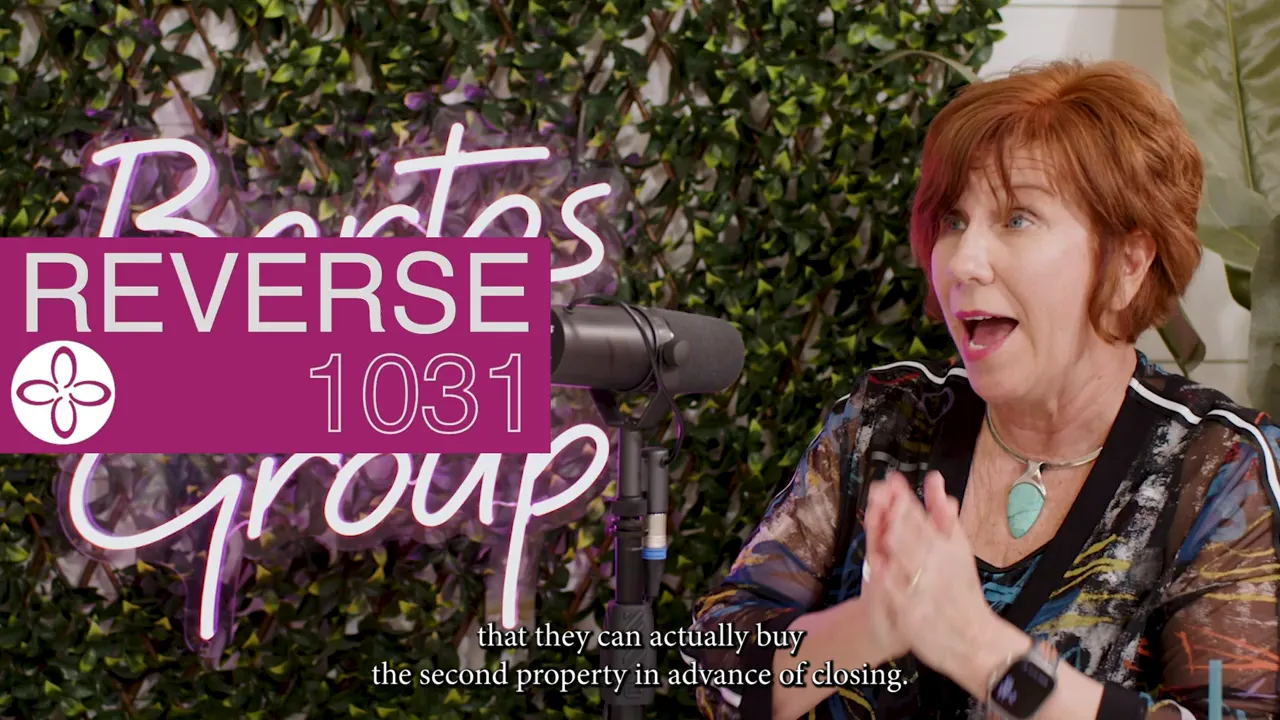In this blog, Mary Bartos with the Bartos Group of Premiere Plus Realty and Peter Huy with Huy Jacob P.A. explain that 1031 exchanges are a powerful but often misunderstood tool for real estate investors. When used correctly, 1031 exchanges allow investors to defer taxes on the sale of investment real estate by exchanging one property for another like kind property. This guide breaks down how 1031 exchanges work, when they make sense, the difference between forward and reverse exchanges, the costs and timing rules to watch, common pitfalls, and practical steps investors should take to protect themselves.

What a 1031 Exchange Actually Is
The author states that at its most basic level a 1031 exchange is a way to defer taxes on the sale of investment property. It applies to investment and rental properties, not a primary residence. The essential idea is simple: instead of selling a property and cashing out, the investor exchanges it for a different property and defers the capital gains tax that would otherwise be due.
“At its most basic level is just a way to defer taxes on the sale of you know a property.”

Tax deferral in a 1031 exchange means the capital gains and any recaptured depreciation tax from the relinquished property are carried forward into the replacement property. The tax basis moves with the exchange rather than being recognized immediately.
Who Facilitates a 1031 Exchange and Why that Matters
The author emphasizes an often overlooked detail: a 1031 exchange is facilitated by a third party called a qualified intermediary. The intermediary is a separate company that receives and holds the proceeds of the sale so the seller never directly touches the cash. If the seller or a representative holds the sale proceeds, the exchange fails and the sale becomes a taxable event.

The role of the closing agent and the intermediary is critical. The seller must engage the intermediary before the closing on the relinquished property. If the intermediary is not engaged in time, an investor cannot convert a post-closing sale into a 1031 exchange later. The author warns about clients who attempted to do the exchange after closing and found out it was not possible.
Timing Rules Every Investor Must Follow
Timing is non-negotiable in 1031 exchanges. The two most important deadlines are:
- 45-day identification period. From the day the relinquished property closes, the investor has 45 days to identify replacement property or properties in writing to the intermediary.
- 180-day closing period. The investor must close on one of the identified replacement properties within 180 days of the relinquished property closing, or by the due date of the taxpayer’s tax return for that year, if earlier.

The author notes that in competitive markets it is wise to have replacement property under contract quickly within the 45-day window to avoid scrambling. A forward 1031 exchange generally requires that the replacement property be under contract within those 45 days and that the transaction close within 180 days.
Forward Versus Reverse 1031 Exchanges
The author explains two primary flavors of 1031 exchanges: forward exchanges and reverse exchanges. Both accomplish tax deferral, but they work in opposite order and have different cost and complexity profiles.
Forward 1031 exchanges
In a forward exchange the investor sells the relinquished property first, the proceeds are placed with a qualified intermediary, the investor identifies replacement property within 45 days, and then closes on the replacement within 180 days. Forward exchanges are the most common and usually the least expensive option.
Reverse 1031 exchanges
In a reverse exchange the investor buys the replacement property before selling the relinquished property. Because the investor cannot directly hold both properties and the IRS prohibits direct receipt of the proceeds, an accommodator or special purpose entity is typically used to hold the replacement property temporarily.

Reverse exchanges are far more complex and expensive. They require setting up an artificial entity to hold title to one of the properties and strict compliance with the same timing rules in a different configuration. The author cautions that costs for reverse 1031 exchanges can climb significantly and in some cases make the tax benefits negligible compared with the expense.
Costs and Whether a 1031 Exchange Makes Sense
Deciding whether to do a 1031 exchange depends on the investor’s tax situation and the economics of the transaction. The author recommends consulting an accountant to determine whether deferring tax is advantageous or whether taking the tax hit now could be better for a specific situation.
- Forward exchange costs. Typically a few thousand dollars for the intermediary and processing. For many transactions this cost is modest compared with deferred tax savings.
- Reverse exchange costs. Considerably higher because of the complexity of setting up entities, holding title arrangements, and additional legal / administrative steps. The author warns these costs may grow to the point the reverse exchange no longer makes economic sense.

The author highlights another consideration: if the investor has limited capital gains or little depreciation recapture on the relinquished property, the tax savings from a 1031 exchange may be small. In such cases the fees and administrative burden could outweigh the benefit. That is why an early conversation with an accountant and a qualified intermediary is essential.
Practical Steps to Execute a 1031 Exchange Successfully
To reduce risk and keep the exchange valid, the author recommends the following best practices:
- Decide early. If a sale might involve a 1031 exchange, engage the qualified intermediary before the sale closes. Do not wait until after closing to attempt the exchange.
- Coordinate with your closing agent. Inform the title company or attorney handling the closing immediately that the transaction will be part of a 1031 exchange so they can direct proceeds properly.
- Consult your accountant. Confirm whether deferring the tax makes sense for your personal and business tax situation.
- Understand and meet deadlines. Identify replacement properties within 45 days and close within 180 days. Treat these deadlines as firm.
- Evaluate costs. Compare the intermediary and legal fees, especially for reverse exchanges, against the expected tax savings.
Common Pitfalls and How to Avoid Them
Investors commonly run into trouble by assuming 1031 exchanges are magical or simple after-the-fact fixes. The author shares real scenarios where clients attempted to claim a 1031 exchange after closing and learned it was too late. Common pitfalls include:
- Failing to engage a qualified intermediary before closing on the relinquished property.
- Not informing the closing agent or attorney that the proceeds will be routed to an intermediary.
- Missing the 45-day identification window or the 180-day closing deadline.
- Underestimating reverse exchange costs and complexity.
- Not consulting an accountant to analyze whether deferral is preferable.
Key Takeaways
- 1031 exchanges allow investors to defer capital gains and depreciation recapture tax by exchanging investment real estate for like kind property.
- A qualified intermediary must hold proceeds; the seller cannot touch the sale proceeds or the exchange will fail.
- Strict timing rules apply: 45 days to identify replacement property and 180 days to close.
- Forward exchanges are more common and typically less expensive than reverse exchanges.
- Always coordinate early with an intermediary, your closing agent, and your accountant.
Final Advice
1031 exchanges are an exceptional tool for real estate investors who want to defer tax, preserve capital, and grow their real estate holdings. However they are not a one-size-fits-all solution. Proper planning, early engagement of a qualified intermediary, coordination with a closing agent, and consultation with an accountant are essential. When used correctly, 1031 exchanges can be a central component of a deliberate tax and investment strategy; when attempted haphazardly, they can lead to missed opportunities and costly mistakes.
For personalized guidance a tax advisor and experienced intermediary should be consulted to confirm whether a 1031 exchange aligns with the investor’s specific goals and financial situation.
FAQs
What types of property qualify for 1031 exchanges?
Investment and rental real estate used for business or investment purposes qualify for 1031 exchanges. A primary residence does not qualify under standard 1031 exchange rules.
How long does an investor have to identify and close on replacement property?
The investor has 45 days from the closing of the relinquished property to identify replacement property and 180 days from that closing to close on one of the identified properties.
Who holds the proceeds during a 1031 exchange?
A qualified intermediary, a third party independent of the buyer or seller, holds the sale proceeds to ensure the investor never takes constructive receipt of the funds.
Are reverse 1031 exchanges worth the extra cost?
Reverse 1031 exchanges are more expensive and complex because an entity must temporarily hold title to a property. Whether they are worth the cost depends on the investor’s tax savings compared with the added fees and administrative burden. Consult an accountant and tax advisor to determine if a reverse exchange makes sense.
Can a 1031 exchange be done after a sale has closed?
No. A 1031 exchange requires that a qualified intermediary be engaged and the proceeds never be delivered to the seller. Attempting to convert a sale into a 1031 after the fact is not permitted.
How much does a 1031 exchange cost?
Forward exchanges typically cost a few thousand dollars for intermediary and processing fees. Reverse exchanges can be substantially more expensive due to the complexity of holding entities and additional legal work. Costs should be weighed against expected tax deferral benefits.
Contact Us Today! |
|
Providing you the experience you deserve! |
| Click me |
